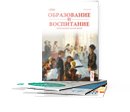This paper explores the integration of the United Nations Sustainable Development Goals (SDGs) into language learning, particularly in the development of argumentative writing skills. By examining existing pedagogical approaches, including metacognitive writing strategies [3], the Toulmin model for argumentation [1], and whole-to-part argumentation instruction [5], the study proposes a framework for embedding SDGs into language curricula. Historical contextualization [2] and instructional coherence [4] further contribute to constructing a meaningful, argument-based language learning environment. Additionally, Kazakhstani resources on academic writing strategies [7] provide insights into localized approaches. This study argues that integrating SDGs into argumentative writing fosters critical thinking, linguistic competency, and global citizenship awareness among students.
Keywords: sustainable development goals, argumentative writing, language learning, metacognitive strategies, historical contextualization, instructional coherence, whole-to-part instruction.
In an era of global interconnectedness, language learning must extend beyond linguistic proficiency to include critical thinking, intercultural competence, and civic engagement. The Sustainable Development Goals (SDGs) provide a multidimensional framework for addressing global challenges such as climate action, quality education, and gender equality (United Nations, 2015). Embedding SDG-related topics into language curricula enhances students’ ability to engage in meaningful discussions and construct well-supported arguments. This paper examines how argumentative writing can be developed through SDG integration, drawing upon pedagogical research on metacognitive strategies, historical contextualization, whole-to-part argumentation instruction [5], and argumentative discourse structures.
Argumentative writing is a fundamental skill in second language acquisition, enabling students to articulate perspectives, analyze opposing viewpoints, and present evidence-based reasoning. The Toulmin model, as applied in Turkish EFL contexts [1, p. 23], and whole-to-part argumentation instruction in Chinese academic settings [5, p. 34] structure arguments into claims, data, warrants, rebuttals, and qualifiers. This structured approach can be effectively employed when engaging with SDG-related topics, ensuring coherence and logical development in students' writing.
Moreover, instructional coherence in argumentative writing has been shown to significantly impact student outcomes [4, p. 156]. By progressively integrating SDG themes into writing instruction, educators can create a scaffolded learning experience that supports students in developing argumentative competencies over time.
Metacognitive awareness plays a crucial role in writing proficiency, as it enables learners to regulate their cognitive processes, plan their writing, and evaluate their arguments [3]. Research indicates that high-proficiency EFL learners utilize metacognitive strategies more effectively, particularly in planning and revising argumentative essays. Studies on Iranian EFL learners [6] have highlighted challenges related to strategy use and proposed solutions for effective argumentative writing instruction. By embedding SDG discussions within metacognitive strategy training, students can refine their ability to construct and critically assess their arguments.
For instance, writing tasks could require students to argue for or against policies related to climate action (SDG 13) or equitable access to education (SDG 4). Through self-monitoring and peer feedback, students would not only improve their writing but also deepen their understanding of global issues.
Historical contextualization enhances students’ ability to construct well-informed arguments by situating claims within broader socio-political and historical contexts [2, p.33]. When writing about SDGs, students can analyze historical trends in economic disparity, gender rights, or environmental policies to support their arguments with historical evidence.
For example, an argumentative essay on SDG 5 (Gender Equality) could incorporate historical case studies of women’s suffrage movements and their contemporary implications. Such an approach fosters deeper engagement with global challenges while honing students’ ability to integrate multiple sources into their writing.
Based on the research examined, the following framework is proposed for integrating SDGs into argumentative writing development:
- Theme Selection : Educators identify SDG-related themes relevant to students' linguistic level and interests.
- Structured Argumentation : The Toulmin model and whole-to-part argumentation instruction are applied to scaffold writing tasks, ensuring clarity and logical progression.
- Metacognitive Strategy Training : Students engage in self-regulation techniques, including outlining, revising, and peer feedback.
- Historical Contextualization : Essays incorporate historical data to support claims and provide a well-rounded argument.
- Instructional Coherence : Writing tasks are embedded in a progressive curriculum that reinforces argumentative skills over time.
Integrating SDGs into language learning enhances students’ ability to engage in meaningful discussions while developing critical writing skills. By leveraging metacognitive awareness, structured argumentation, historical contextualization, educators can foster a more dynamic and impactful language learning experience. Future research should explore empirical studies on the efficacy of this framework in diverse educational settings.
References:
- Qin, J. (2013). Applying the Toulmin model in teaching L2 argumentative writing. The Journal of Language Teaching and Learning , 2013–2 , 21–29.
- Sendur, K. A., van Drie, J., & van Boxtel, C. (2021). Historical contextualization in students’ writing. Journal of the Learning Sciences , 30 (4–5), 797–836.
- Üstünbaş, Ü. (2024). EFL learners’ use of metacognitive writing strategies in Türkiye: A descriptive study. Journal of Higher Education and Scie nce, 14 (2), 240–249.
- Newell, G., & Bloome, D. (2015). Teaching and learning argumentative writing in high school English language arts classrooms. Routledge .
- Yang, R., & Pan, H. (2023). Whole-to-Part Argumentation Instruction: An Action Research Study Aimed at Improving Chinese College Students’ English Argumentative Writing Based on the Toulmin Model. SAGE Open .
- Mallahi, O. (2024). Exploring the status of argumentative essay writing strategies and problems of Iranian EFL learners. Asian-Pacific Journal of Second and Foreign Language Education, 9(19).







